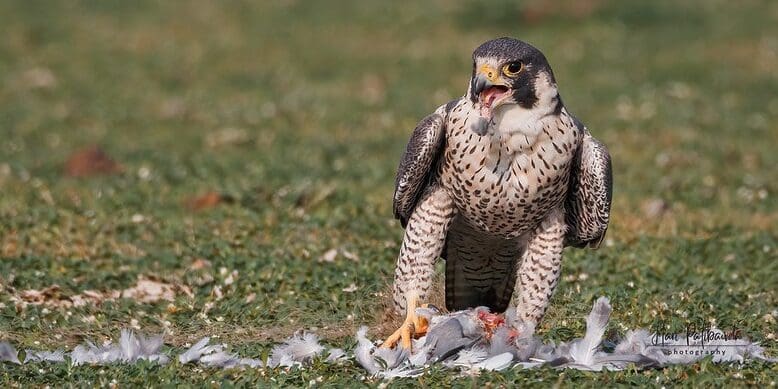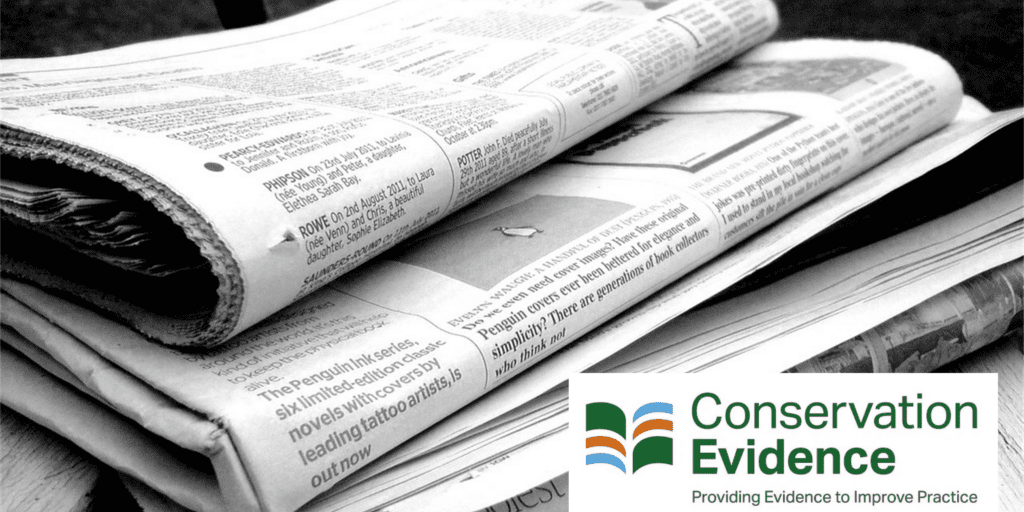Nature’s Sure Connected: a practical framework and guidance for evidencing outcomes of landscape-scale conservation
Dr Paul Tinsley-Marshall is the Conservation Evidence Manager at Kent Wildlife Trust, UK

The Lawton Principles continue to guide the delivery of conservation in the UK, eleven years on from the publication of Making Space for Nature[1]. Lawton’s influential review outlined a need for more, bigger, better and joined spaces for nature, to create a coherent and resilient ecological network. As conservationists and policy makers progress towards the establishment of a Nature Recovery Network for the UK, and nature-based solutions such as wilding enter the toolkits of practitioners, it is vital that we can evidence conservation outcomes at the landscape-scale.
Landscape-scale conservation is the combined contribution of multiple management actions, on multiple sites, and by multiple stakeholders. This results in a complex matrix of conservation interventions and policies in space and time, with many and varied desired outcomes. The shift in focus from protecting individual species and sites, to restoring the interactions between species, habitats and natural processes within landscapes is yet to be accompanied by best practice in how data is captured and analysed.
Recognising a need for effective monitoring at the landscape scale, Kent Wildlife Trust seeks to develop and co-design approaches with the UK conservation community through the Nature’s Sure Connected (NSC) project. The primary objective and output of the project will be A practical framework and guidance for evidencing landscape scale outcomes of landscape-scale conservation[2]. The framework suggests practical monitoring approaches and other outputs including:
• A set of guiding principles for defining landscape parameters,
• An ordered list of attributes of monitoring programmes,
• Guidance on defining monitoring themes and rationale,
• A prioritised list of key landscape scale questions,
• Guidance on articulating a question and hypothesis testing,
• Criteria for selecting landscape-scale indicator species.
NSC aims both to enable Kent Wildlife Trust to make an organisational shift towards evidencing landscape-scale outcomes and to progress best practice in landscape-scale monitoring among the wider conservation community. The project started by consulting key stakeholders (over 200 practitioners from over 100 organisations) to ensure that our framework is developed by those who need it and to prioritise key themes. The key themes prioritised by stakeholders were: more (land managed positively), better (habitat quality), joined – (theoretical and functionally connectivity), biodiversity (population trends) and ecosystem function (goods, services and functions provided by the natural word). Here I focus on one of these approaches (joined) that NSC is developing to evidence outcomes at landscape-scale.
‘Joined’ is one of the key approaches put forward by Lawton to restore landscape connectivity by ‘enhancing connections between, or joining up, sites, either through physical corridors, or through stepping stones.’ Implementing this is something we know how to do, but we know little about what they do. There is a lack of evidence for the effectiveness of interventions to enhance connectivity.
Although connectivity is an intuitive concept, there is no single consistently used metric to measure it. Metrics fall into three categories:
- Structural – the physical properties of landscapes such as patches (size, number, distance to each other) and disturbance (structures such as roads, fragmentation, urban/agricultural land-use, human population). Structural connectivity is simply a measure of how spatially connected the elements in a landscape are, without reference to ecological process.
- Potential – based on landscape structure, and basic information about the study organism’s dispersal ability such as average dispersal distance.
- Functional – based on actual movements of individuals along and across contours of connectivity.
Connectivity modelling approaches are popular and widely used to quantify structural and potential connectivity. The need to validate modelling approaches is widely recognised, but existing field survey methods lack a strategic approach that can detect functional connectivity. NSC sought to review and assess modelling and field survey approaches and their application, and to test a dual approach. Firstly, quantifying potential connectivity for defined species, and secondly by attempting to validate model outputs with a novel field survey approach. This approach can be easily and flexibly applied by conservation organisations in a wide variety of landscape-scale contexts.
We used Circuitscape to model connectivity of our focal landscape for the chosen species, a butterfly (Adonis blue) and a snake (European adder). These species were chosen to reflect different temporal rates of dispersal potential. Our model was parameterised using scientific literature and expert knowledge to include habitat value and resistance scores and to create habitat value and resistance ‘surfaces’. The model created core population areas of the focal species from the parameters, and estimated connectivity between these cores, allowing us to quantify change in connectivity.

We then defined a simple equation to determine target survey locations in which to attempt to detect functional connectivity for a focal indicator species within a landscape:
Target survey locations = (potential range – known range) + known absence + spatial dispersal potential + temporal dispersal potential
Where:
- Target survey locations = locations in which recording the indicator species will demonstrate functional connectivity.
- Potential range = the spatial extent of potential occupation by the chosen indicator species.
- Known range = the known range of the chosen indicator species within the defined landscape boundary.
- Known absence = the spatial extent in which sufficient survey effort has been conducted to provide reasonable confidence of absence of the chosen indicator species.
- Spatial dispersal potential = the spatial range over which the chosen indicator species might be expected to disperse from its known range.
- Temporal dispersal potential = the temporal range over which the chosen indicator species might be expected to disperse from its known range.
Application of this equation to spatial data using GIS allowed us target survey effort in locations in which finding the focal species would indicate functional connectivity, by narrowing down suitable habitat, the locations to which dispersal would be ecologically feasible from existing populations, and where reasonable confidence in prior absence could be established. To apply the equation in other contexts, some of the key parameters would need to be defined on a case-by-case basis, and our framework also addresses additional considerations around spatial resolution and patch size. The approach is not perfect, but we believe it is a useful foundation on which to build a field survey approach that can validate connectivity models with empirical data.
Our field surveys in 2019 found Adonis blue in a number of locations in which it had not been recorded in the preceding ten years, in spite of recording effort for butterflies in those locations. This indicates recent colonisation of previously unoccupied areas, and the existence of connectivity for the species within the landscape.

The framework we are developing draws on the contribution of multiple stakeholders and we hope it will be used and developed by others to advance best practice in landscape-scale evidence. We will welcome constructive feedback once we have published it in June 2021.
If you are interested in finding out more please contact Paul Tinsley-Marshall at paul.tinsley-marshall@kentwildlife.org.uk.
Nature’s Sure Connected is funded by the National Lottery Heritage Fund.

[1] Lawton, J.H., Brotherton, P.N.M., Brown, V.K., Elphick, C., Fitter, A.H., Forshaw, J., Haddow, R.W., Hilborne, S., Leafe, R.N., Mace, G.M., Southgate, M.P., Sutherland, W.J., Tew, T.E., Varley, J., & Wynne, G.R. (2010) Making Space for Nature: a review of England’s wildlife sites and ecological network. Report to Defra.
[2] Tinsley-Marshall, P.J, Riggs, A. & Skilbeck, A. (DRAFT) Nature’s Sure Connected: A practical framework and guidance for evidencing landscape-scale outcomes of landscape-scale conservation. Kent Wildlife Trust.



